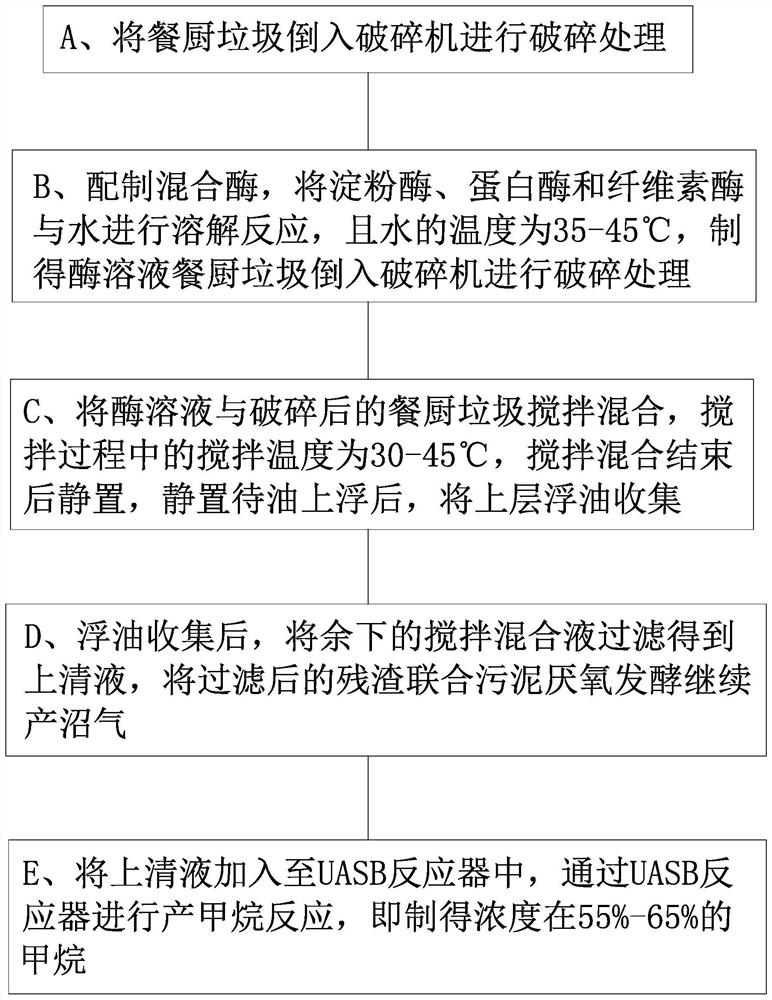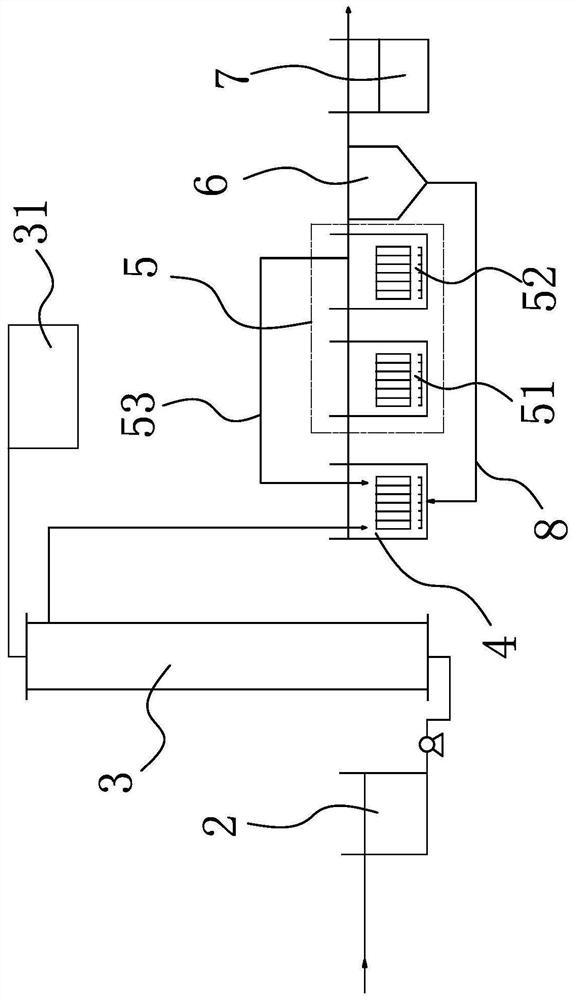Method for fast biogas production from kitchen waste
A kitchen waste and rapid technology, which is applied in the field of rapid biogas production of kitchen waste, can solve the problems of reducing the specific surface area of contact between substrates and microorganisms, affecting the efficiency of methane production, and increasing the cost of methane production, so as to achieve resource utilization and high efficiency. Economic benefits and low cost investment
- Summary
- Abstract
- Description
- Claims
- Application Information
AI Technical Summary
Problems solved by technology
Method used
Image
Examples
Embodiment Construction
[0065] The following are specific embodiments of the invention and in conjunction with the accompanying drawings, the technical solutions of the present invention are further described, but the present invention is not limited to these embodiments.
[0066] Such as Figure 2-3 as shown,
[0067] The fast biogas production method of kitchen waste comprises the following steps:
[0068] A. Pour 10kg of kitchen waste into the crusher for crushing;
[0069] B. Prepare a mixed enzyme, dissolve and react amylase, protease and cellulase with water, and the temperature of the water is 35-45°C to obtain an enzyme solution;
[0070] C. Stir and mix the enzyme solution with the broken kitchen waste. The stirring temperature during the stirring process is 30-45°C. After the stirring and mixing is completed, let it stand still. After the oil floats, collect the upper layer of slick oil;
[0071] D. After the oil slick is collected, filter the remaining stirred mixture to obtain the supe...
PUM
| Property | Measurement | Unit |
|---|---|---|
| particle diameter | aaaaa | aaaaa |
Abstract
Description
Claims
Application Information
 Login to View More
Login to View More - R&D
- Intellectual Property
- Life Sciences
- Materials
- Tech Scout
- Unparalleled Data Quality
- Higher Quality Content
- 60% Fewer Hallucinations
Browse by: Latest US Patents, China's latest patents, Technical Efficacy Thesaurus, Application Domain, Technology Topic, Popular Technical Reports.
© 2025 PatSnap. All rights reserved.Legal|Privacy policy|Modern Slavery Act Transparency Statement|Sitemap|About US| Contact US: help@patsnap.com



